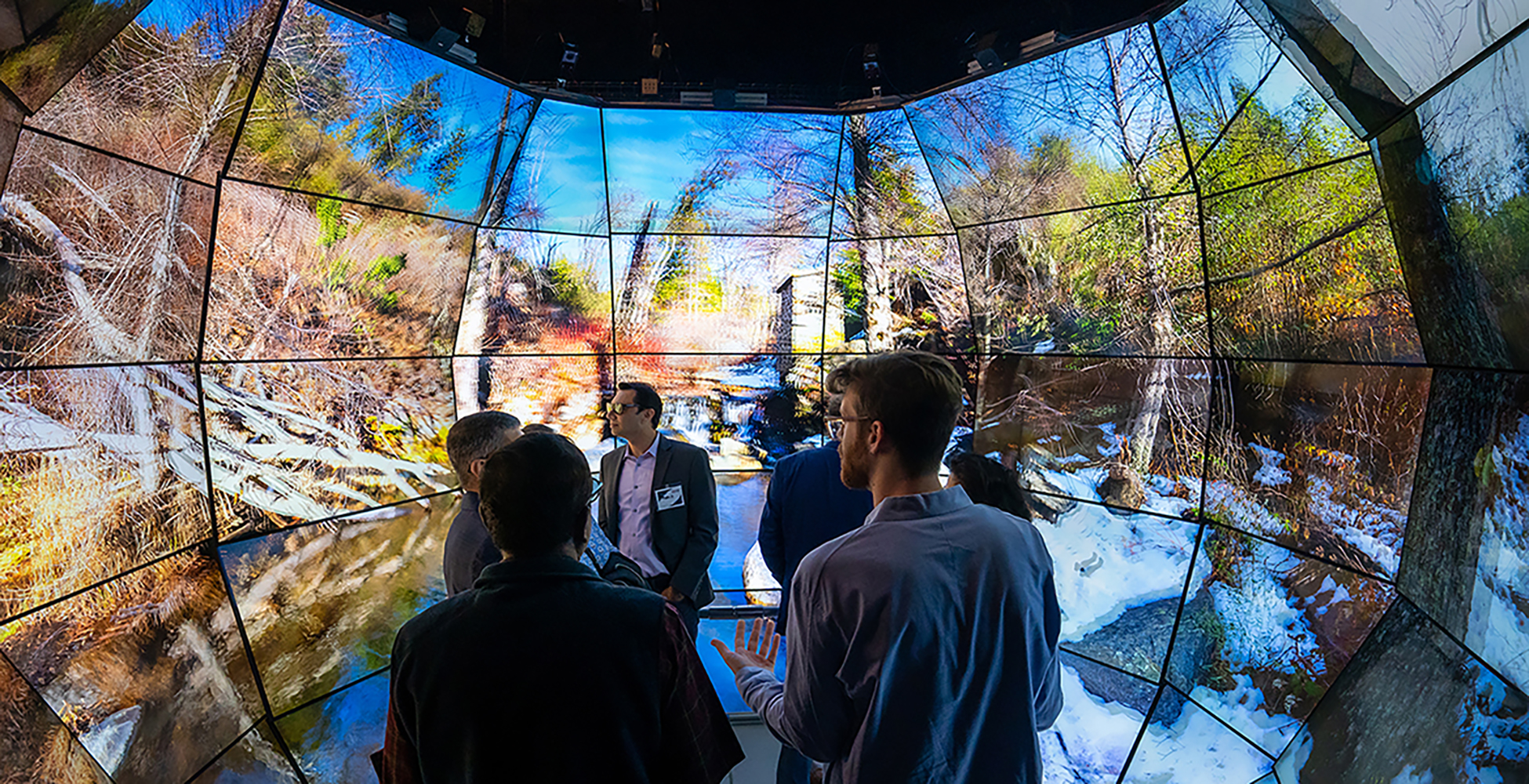Nine Insights into the Metaverse from the QI Stage

What is the Metaverse, and how will it affect our future, socially and economically? Those were questions addressed at a recent event at the Qualcomm Institute’s (QI) Atkinson Hall presented by TIE South Coast, a non-profit group welcoming entrepreneurs from San Diego and surrounding areas.
The event, whose sponsors included QI, UC San Diego and CerraCap Ventures, featured QI and industry demonstrations and a panel discussion, “Metaverse, an alternate digital world of reality. Is it real or hyped?” Here are nine insights offered by speakers at the event (quotes edited for brevity and clarity).
1. “The metaverse is going to be the next phase of internet. It will enable and provide new immersive experiences and extended reality to many, many applications—health care, training, entertainment, construction, industrial and much more.” — Naresh Soni, CEO of Next Wave Technologies, Inc. and event co-organizer
2. “For any new technology that comes out, you want to say, “Is it hype? Is it real?” What’s the first thing you do? You look at where the money is flowing. In the last year, about $2 billion has been invested in AR (augmented reality) ventures alone, and $62.8 billion in virtual world products. Bloomberg predicted that the Metaverse market value could be valued at $880 billion by 2024. … From a long-term investment perspective, the Metaverse is formative, but it is also inevitable. … It is driven by that fundamental human need to dream, to connect and now to break the laws of physics.” — Saurabh Suri, managing partner of Cerracap Ventures
3. “Do you know this fact that there are more mobile phones in this world than toothbrushes? Technology is going to change everything. … Marc Weiser once said that the most profound technologies are the ones that disappear. How do they disappear? ‘They weave themselves into the fabric of everyday life so that they are indistinguishable from it.’ That’s the beauty of technology. And we have witnessed this over and over again.” — Rajnikant “Raj” Gupta, global head, strategic partnerships for emerging technology at Tata Consultancy Services (TCS) and panel moderator
4. “The fundamental definition of the Metaverse is a way to bring the digital and physical world together. … We are still at the very early stage of the Metaverse today. We have augmented reality headsets, virtual reality headsets, IOT [Internet of Things], but we definitely need a better infrastructure and technologies … We are still defining it. Enterprise is defining the Metaverse from its own use cases; the gaming industry is defining Metaverse from its perspective.” — Feroz Muhammad, global head of ThinkReality xR services and vertical solutions, Lenovo
5. “The opportunity to disrupt markets and create new ones by integrating the virtual and physical world is really staggering. The key to success is to delight the customer with fantastic user experiences and to solve real problems that are not able to be solved today by any other way.” — Gioia Messinger, entrepreneur; founder/CEO, LinkedObjects; Board member, Venture Capital Advisor
6. “We want to believe in magic. This is the nature of the human condition. In doing so, our sense of identity can be heavily influenced by the Metaverse, and that might help address vexing issues of inclusiveness. Many of us are where we are today because we followed somebody we were familiar with; implicitly, we were in an environment rich with opportunities. But there are so many communities in the U.S. and certainly around the world where people live in insular environments with few opportunities. My favorite application of the metaverse is to break through these boundaries. … The Park & Market project is one example of how UC San Diego might be able to leverage the use of these technologies to address not only its educational mission, but also social inequities.” — Ramesh Rao, director of QI
7. “How do we count steps? We count steps by how we move our hands. That’s the wrong way. But think about it: Wouldn’t it make sense to count steps based on some sensors in your shoe? So I tend to think of the Metaverse as you (the person), the devices on you, how they connect and communicate with each other, and the resulting experiences that you derive from those.” — Pankaj Kedia, senior director & business lead for Smart Wearables segment, Qualcomm Technologies
8. “When I went to school, we had typing class. I doubt you’ve taught any one of your children how to type. They just picked up the keyboard and started doing it, or they started typing on their phones or their tablets. So the idea is we just keep things simple. We make it friendly so that anybody can use it. And we make it so that you can serve it to yourself. And that’s how we think that the Metaverse will become ubiquitous as we proceed further in time.” — Manoj Kumar Jhawar, founder and CEO, Augmentalis
9. “There are really good virtual reality games out there today—just not enough yet. In the near-term, I think that augmented reality is perhaps going to be more successful, because content generation [for virtual reality] is a tricky piece. Augmented reality glasses could show users where the bolt is they have to undo, and then the next step, in workshop manuals for cars. These very limited scenarios are probably where it starts because the content is already there.” — Jurgen Schulze, senior engineer, Qualcomm; adjunct professor, UC San Diego; former QI employee
For more information on QI, see qi.ucsd.edu. For more information on TIE, see https://hub.tie.org/c/tiesouthcoast.